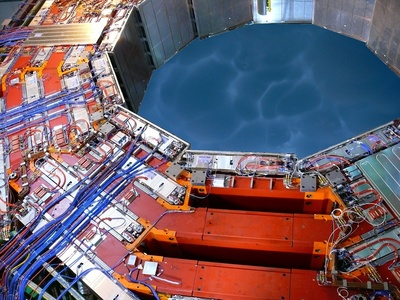Loose Cable Responsible For Faster-than-Light Neutrino?
Recently, the case when scientists at CERN were left puzzled over neutrinos that appeared to travel faster than the speed of light. The findings were controversial because they conflicted directly with the theory of relativity, as well as virtually everything else we know about the way the universe functions. Ever since the results were released five months ago, scientists at both CERN and other institutions have worked to explain the results. It was believed that all potential errors had been eliminated. That is, until they checked their cables.
“Until They Checked Their Cables”

As it turns out, a fiber optic cable was distorting the results produced by one of the atomic clocks that was timing the neutrinos experiment. This loose cable caused the readings to appear slightly faster, making scientists read the neutrinos as being faster than the speed of light. Although only one source has reported this finding, it’s a sound explanation for a phenomena that was otherwise bordering on impossible to explain. This is an error that took almost half of a year for the world’s top scientists to find. The manpower, time and money that went into finding this error could certainly have been better invested in other areas. Instead, something as simple as a loose cable resulted in a black hole of productivity.
The issues seen in this experiment underscore that the cable & wiring details should never be overlooked whether its trying to figure out that plugging the RCA component cables in the wrong sequence threw out all the colors on your TV screen or when operating something of a large scale or of serious consequences. Suppose that the same thing happened not in a controlled experiment, but in an industry where the potential for danger is high. Cables with intermittent connection in high reliability industries can certainly be responsible for a host of interesting consequences. In a commercial or industrial facility, intermittent connections could lead to inaccurate temperature and facility readings.
Beyond these sorts of catastrophic failures in scenarios where a finished product is being used, loose or improperly installed cables can also make the results distorted in research environments. In industries, where new equipment and technologies are being tested, engineers and technicians rely on testing equipment to interpret readings. This is exactly what happened in the CERN experiment, but again, the results could be more devastating if the issue isn’t taking place in a controlled environment. Imagine the military commissioning a new jet that was designed based on faulty research due to loose aviation cables. The losses would amount to millions of dollars before anyone caught on to the flaw.
Situations like what happened at the CERN research facilities just prove that it’s never safe to overlook thorough inspection of even the most minor components. High-reliability industries just can’t afford the risk, especially if the system lacks redundancy. When constructing new equipment, the use of quality custom cables that are tailored to meet specifications is crucial. Properly manufactured cable assemblies customer specified and customized specifications means that the results being reviewed by engineers will be accurate every time. On the other hand, poorly built cable assemblies result in lost time, lost money and potential weeks of frustration.
Further Reading: Ars Technica